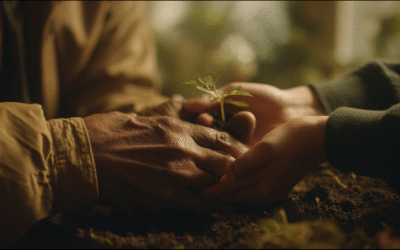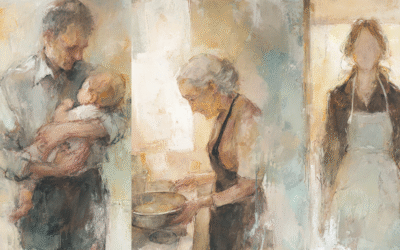Domestic Awareness Raising Peace Events
From events at individual schools to major Peace Festivals in Martin Place featuring thousands of participants, we have been moving through the process of awareness raising, engagement and commitment amongst Australians of all ages, races and religions.
Youth Peace Parliament
Building on the International YMCA Youth Parliament, and the Australian equivalent, a Youth Peace Parliament was introduced by the MFPA in NSW in 2009 to specifically tackle issues of peace, reconciliation and justice.
International Outreach
The Ministry for Peace Australia was a co-founder of the Global Alliance for Ministries and Departments of Peace. It is recognized in over 50 countries as supporting the establishment of infrastructures for peace in both government and civil society, as peacebuilding becomes institutionalized in nations around the world.
Building understanding & Engagement
The MPFA campaign has now moved into the stage of building a greater understanding of how peace could be institutionalised in government, what it would do and engage government and the public into making concrete steps to achieve this.
What a Universal Basic Income Really Is
Universal Basic Income is often discussed but rarely explained clearly. This article sets out what it is, where the idea came from, what global evidence shows, and why a partial model is the most realistic path for Australia.
The Peace Integrity Score: Why Ceasefires Are Not Enough
Ceasefires stop guns; peace rebuilds trust. The Peace Integrity Score helps readers, policymakers, and media tell the difference, measuring inclusion, rights, justice, and durability.
From Rights to Responsibilities: Rebalancing the Moral Equation of Peace
The Universal Declaration of Human Rights changed the world. But in an era of climate collapse, disinformation, and social fracture, we need to evolve—toward a framework of shared responsibilities.
How Nations Weaponize Stories to Protect Fragile Identities
Nations, like individuals, can act narcissistically. They rewrite history, deny harm, and cast themselves as victims to shield fragile identities. From MAGA to Russia’s “historic destiny,” from Israel’s perpetual siege to Australia’s ANZAC myth, weaponized stories bind and blind us. The challenge is not to abandon myth but to create narratives resilient enough to hold truth as well as pride.
From Care Crisis to National Policy: Rebuilding Australia Through Right Human Relations
What if peace was something we built at home, not just in Parliament? This bold proposal from Ministry for Peace Australia reframes unpaid parenting, community work, and elder care as national priorities—and outlines exactly how we can fund them.
The Architecture of Escalation: Why Peace Must Be Built Like Defence
Escalation isn’t inevitable—it’s engineered. From Gaza to Ukraine, modern conflicts follow predictable patterns. What if peace had its own infrastructure to stop them?
When Peace Becomes More Than the Absence of War
There's a moment in every heated family argument when someone—usually the most exhausted person in the room—throws up their hands and says, "Can't we all just get along?" It's a reasonable plea, born from genuine fatigue with conflict. But here's...
Truth-Telling: The Gap Between Personal Narrative and Reconciliation
A prince borrows Indigenous wisdom to justify his memoir, revealing our modern confusion between personal storytelling and communal truth-telling—where reconciliation requires not just speaking your piece, but making space for contradictory truths.
Lest We Forget: A Promise to the Future, Not Just a Tribute to the Past
Anzac Day is not just memory—it’s a call to create a world where peace is policy, not just prayer.
The Eye Color Experiment: Our Unfinished Journey to Empathy
There’s a line near the end of Colin Benjamin’s recent essay—BLUE AYES/BROWN NAYES—that I keep circling back to. It comes after he’s laid bare the way modern identity politics mimic Jane Elliott’s infamous 1968 classroom experiment, where...
Supply Chain Leverage: The New Power Brokers of Global Trade
Global trade’s quiet revolution: Once-mighty buyers now bend to sellers who control critical supply nodes—a shift reconfiguring peace and power alike.
The Housing Ecosystem: Australia’s Peace Depends on Residential Biodiversity
Australia’s housing crisis isn’t just economic—it’s a peace emergency. Viewing homes as an ecosystem reveals how residential biodiversity creates stability our fragmented market cannot.
The Architecture of Division: How Strategic Exclusion Shapes Political Power in 2025
In Trump’s 2025 America, exclusion functions as political architecture rather than accident—a neurological hack where amygdala overrides prefrontal cortex, transforming belonging anxiety into tribal power and institutional memory into threat.
Beyond the Absence of War: Integrating Positive and Negative Peace in Policy Development
The quest for peace has been humanity's eternal struggle, yet our understanding of what constitutes true peace has evolved significantly. While most view peace simply as the absence of war, contemporary peace studies reveal a far more nuanced and...
Diplomacy in the Age of Transactional Leadership: A New Path to Peace
In a world of power-driven diplomacy, traditional peace efforts fail. How can we adapt strategies to navigate dominance without losing core values?
Built on 20+ years of Foundational work

Australia first called for a Ministry for Peace in 1937 through the voice of the Women’s International League for Peace and Freedom. This call was sounded again in 1982 when Dr. Stella Cornelius, for the United Nations Association of Australia (UNAA), launched a vigorous campaign for a Ministry for Peace at an Australian Federal Government level.
“An Australian Campaign for a Ministry for Peace- A Worldpeace Initiative,” published in 1984 (ISBN 0 9499652 02 4) was written by Dr. Keith D. Suter as a result of Stella’s campaign for a Ministry for Peace. In the book’s acknowledgements Dr Suter says:
“The inspiration behind this book came initially from Stella Cornelius. It was through the work of the UNAA Peace Program, that the Ministry proposal first arose and Stella, more than any other person, has been responsible for maintaining the momentum behind the campaign.
This is a fitting opportunity to thank Stella for her work generally in the cause of peace as well as congratulating her specifically on the Ministry for Peace campaign.”
Dr. Stella Cornelius is the founder of the Conflict Resolution Network (CRN) in Australia of which she is still a co-director. One of CRN’s major achievements is to give free access (through their website) to a wide range of training materials thereby establishing an invaluable resource for the world wide Conflict Resolution movement. From 1984 -1986 Stella served the Australian Government as Director of the UN International Year of Peace 1986.
Stella Cornelius (in 1983) proposed that a Ministry for Peace be established in order to administer an Australian World Peace program and, in 1984, the Department of Foreign Affairs established a Peace & Disarmament section under the leadership of Tonia Shand. Since this time the Conflict Resolution Network has maintained the initiative and never lost sight of the vision of a Ministry for Peace.
In 1983 our Department of Foreign Affairs appointed Mr. Richard Butler as the first Ambassador for Disarmament. This initiative was to improve government/community communications by the regular publication of a Disarmament Newsletter. The Department of Foreign Affairs made an initial grant toward the establishment of Australian peace research. Together with the Department of Education it made a commitment to Peace Education. This was largely influenced by the work of Professor Frank Hutchinson and his wife Lyn Waddell, both of whom continue to be engaged in innovative initiatives in this field. (Professor Hutchinson author of “Educating Beyond Violent Futures” Routledge London 1996).

Department of Peace Campaign USA- 2001
World wide interest has been revived with the dynamic campaign of the Hon. Dennis J. Kucinich Democrat Congressman for Cleveland Ohio, USA. On 11 July, 2001 Congressman Dennis J. Kucinich introduced H.R.2459 a bill to create a Cabinet-level Department of Peace which would embody a broad-based approach to peaceful, non-violent conflict resolution at both domestic and international levels.
The Department of Peace would serve to promote non-violence as an organizing principle in our society, and help to create the conditions for a more peaceful world.

Ministry for Peace Campaign Australia – 2003
Biannca Pace took the role of Chairperson for the Ministry of Peace Australia in March 2005. She first heard of Congressman Kucinich in March of 2002 and contacted him to congratulate him on his work for peace. He responded and when the Share the Spirit of Peace – Peace Summit (held at the University of Sydney on 1 March 2003) was being planned in late 2002, suggested to the organisers that he be invited. At this Sydney Summit, Australia’s four major political parties were invited to attend and “share a platform for Peace.”
In November 2004 Biannca, then State President of the Australian Democrats, (Aug 2004-Dec 2005) initiated and co-chaired two meetings of the Ministry for Peace- Australia with Dr Stella Cornelius.
Biannca then continued as Chairperson, benefactor and driving force of the Australian campaign until her passing in 2021.














